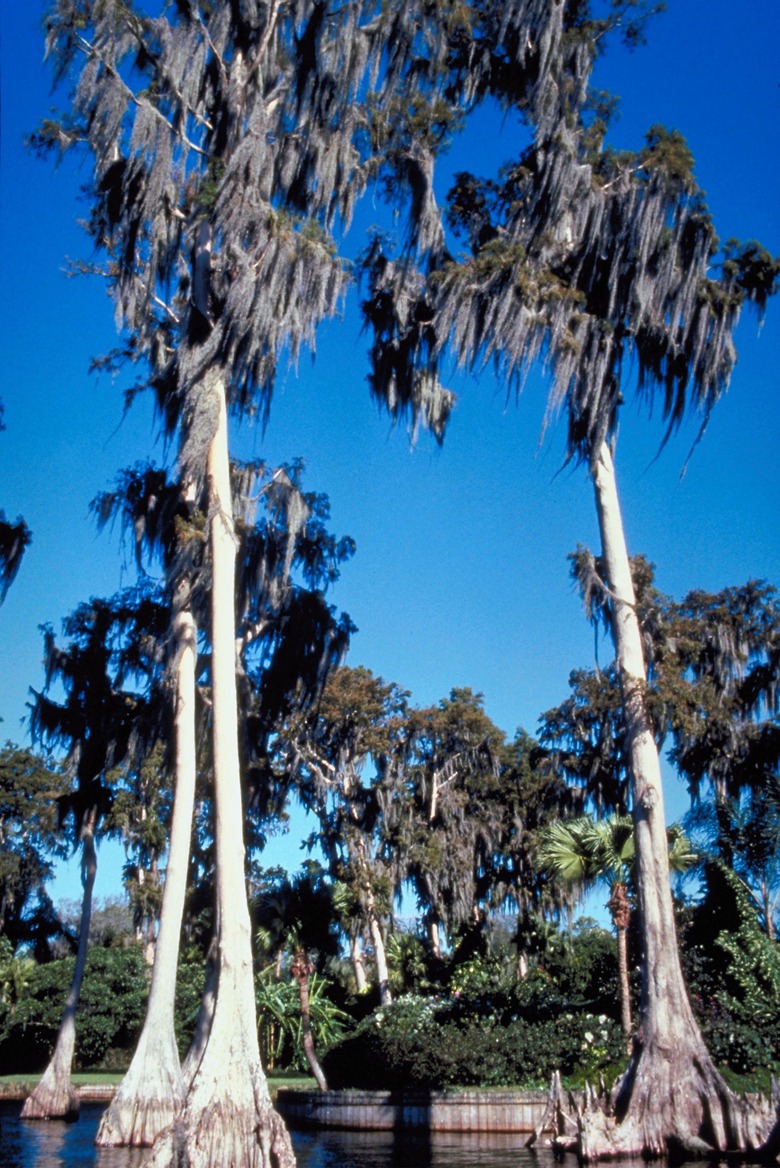Can You Burn Cypress Wood?
True North American cypresses tend to be highly localized and scattered in distribution, from the storm-battered Monterey cypresses of the California coast to the Arizona cypress of Southwest savannas and chaparral. But a number of species are widely cultivated, and logs from a downed tree crop up regularly on the local market as do those from the distantly related bald-cypress. Such trees don't produce the finest firewood but can still come in handy when beginning a blaze.
As Firewood
As Firewood
Cypress wood tends to be fairly mediocre or, at best, serviceable as firewood. Like most other softwoods, which includes all conifer species, it usually burns fairly quickly if well-seasoned, providing little long-lasting value. Its resins may create substantial smoke — a sign that much energy is going into vaporizing moisture — and also promote the accumulation of creosote in chimney flues. Thus, cypress wood may be best used in an outdoor campfire or cooking fire rather than a home fireplace.
Bald-cypress
Bald-cypress
While Western North America has a number of species of native cypress, another tree recognized by the name in the Southeast may be more familiar. Actually, the bald-cypress is in a distinct genus, Taxodium, though belonging to the same family as true cypresses. This occasionally massive tree, often buttressed at the base, has a wide distribution in swamps, riverine forests and other bottomlands. Poorly seasoned bald-cypress wood can be moist and difficult to burn — though aromatic in the flame — and, like the true cypresses, is usually a better choice for an outdoor blaze.
As Kindling
As Kindling
Like many softwoods, however, both true cypresses and bald-cypresses can provide fine wood for kindling. A log is easy to split into small, thin shanks, and the branch and root nubs of a weathered, long-fallen tree — if you have the permission to utilize it — can also be used. Assemble a nest of tinder, which might be anything from seasoned pine needles or cones and dried moss to crumpled paper or wood shavings. Then frame around this a loose cone of cypress kindling. Ignite the tinder and bolster the flame with steady exhalations or a fanned plate. As the cypress kindling catches, begin laying thicker pieces of longer-lasting hardwoods like oak or hickory onto the fire.
Seasoning
Seasoning
Like other woods, cypress timber should be seasoned before use in the fire for the best results. Cutting a tree in autumn or early winter is typically a good bet, as the tissues naturally contain less moisture at the onset of the cold season. Split the wood upon cutting. Arrange the logs in a loosely structured stack off the ground, as on a palette. If you can roof these with an open-air woodshed or heavy-duty tarp tied above, you can shield the pile from precipitation while still allowing for airflow. The seasoning process may last six months to a year or more — longer if the cypress or bald-cypress was particularly wet. Well-seasoned firewood tends to pale in color, slough off bark, crack broadly at its ends and emit a resonant clacking sound when struck together.
